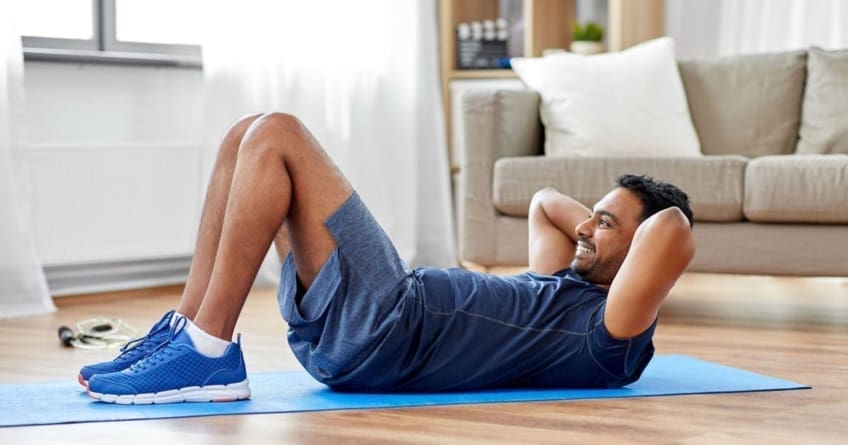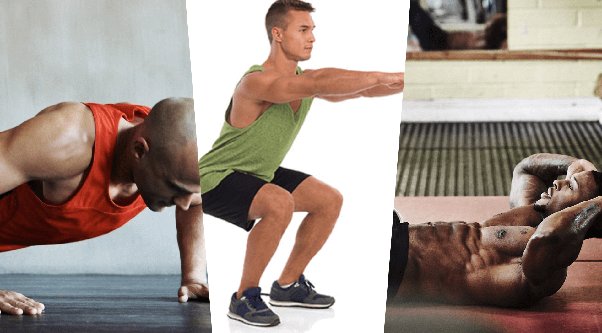Ready to transform your life and become the best version of yourself? It’s time to lace up your sneakers, roll up your sleeves, and dive into the world of fitness! This Ultimate Beginner’s Guide to Fitness is your first step towards a healthier, stronger you. With every fitness journey starting with a single step, remember that while it might be challenging, the rewards are well worth the effort. Let’s hit the gym, take that first run, and embrace the sweat. Your journey to fitness starts now—show the world your determination and strength!
Why Exercise?
Engaging in regular exercise is a cornerstone of a healthy lifestyle. It plays a vital role in maintaining a healthy weight, building muscle mass, and reducing the risk of chronic illnesses. Beyond the physical benefits, exercise enhances mood, improves mental health, and boosts sleep quality. It also keeps your energy levels high and contributes to overall vitality. Studies have shown that regular physical activity can significantly enhance your quality of life. For instance, research indicates that people who exercise regularly have a lower risk of cardiovascular diseases and experience improved mental well-being.

How to get started?
Starting a new workout routine can be both exciting and challenging. Here are some key steps to ensure you begin your fitness journey on the right foot:
- Check Your Health: Before diving into a new exercise regimen, consult with a healthcare professional, especially if you’re new to intense physical activity. A medical checkup can identify any underlying health issues that might increase your risk of injury and help tailor your workout plan to your specific needs and limitations. For example, if you have a history of joint issues, your doctor might recommend low-impact exercises to start.
- Create a Plan and Set Realistic Goals: Develop a structured plan with clear, achievable goals. Start with small, manageable steps that build on each other as your fitness improves. For instance, if your ultimate goal is to run a 5K, begin with shorter runs and gradually increase the distance. Setting incremental goals, like running a mile without stopping, will keep you motivated and make your progress more tangible. Remember, setting specific, measurable, attainable, relevant, and time-bound (SMART) goals can help you stay focused.
- Build a Consistent Routine: Consistency is key to long-term fitness success. Integrate exercise into your daily schedule to make it a habit. Research suggests that replacing unhealthy behaviors with healthier ones is effective for sustaining long-term routines. Find a time that works best for you, whether it’s exercising first thing in the morning or after work. Consistent timing can help reinforce your commitment and make your new routine a lasting part of your lifestyle. For example, scheduling your workouts at the same time each day can make it easier to stick with your routine.
1-Week Sample Exercise Program
Here’s a simple, equipment-free, 1-week exercise plan designed to fit into your daily routine. Each session takes just 30-45 minutes, making it easy to incorporate into your busy schedule. Adjust the intensity to match your fitness level and make it as challenging as you need.
Monday: Engage in a 40-minute brisk walk or moderate-paced jog. This will elevate your heart rate and get your week off to an active start.
Tuesday: Take a rest day to allow your body to recover and prepare for the upcoming workouts.

Wednesday: Start with a 10-minute brisk walk. Then, complete the following circuits, resting for 1 minute between sets but not between exercises. Finish with a thorough stretch.
- Circuit #1: 3 sets of 10 lunges per leg, 10 pushups, and 10 sit-ups.
- Circuit #2: 3 sets of 10 chair dips, 10 jumping jacks, and 10 air squats.
Thursday: Enjoy another rest day to let your muscles recover and prevent overtraining.
Friday: Opt for a 30-minute bike ride or a moderate-paced jog. This cardio session will help improve your endurance and cardiovascular health.
Saturday: Rest and recharge for the final workout of the week.
Sunday: End your week with a 40-minute run, jog, or long walk. This session helps build stamina and provides a relaxing finish to your weekly exercise routine.
A few tips for beginners
1. Prioritize Hydration
Hydration is a cornerstone of both overall health and exercise performance. To stay hydrated, aim to drink water consistently throughout the day, not just when you’re thirsty. During workouts, particularly in hot and humid conditions, ensure you drink fluids before, during, and after exercise to maintain hydration levels. Opt for water or sports drinks that replenish electrolytes if you’ve engaged in intense or prolonged activity. For example, if you’re doing a long run, consider drinking a mix of water and an electrolyte drink to prevent dehydration and support optimal performance. Post-exercise, hydration aids in muscle recovery and helps prepare your body for the next workout. Remember, hydration is not only about quenching thirst but also about ensuring your body functions optimally.

2. Listen to Your Body
Being attuned to your body’s signals is crucial for a safe and effective fitness journey. If you experience signs of fatigue, discomfort, or pain, it’s important to listen and adjust your exercise routine accordingly. Overexertion can lead to injuries and setbacks. For example, if you feel a sharp pain in your knee while running, it’s essential to stop and evaluate the cause—whether it’s improper form, inadequate footwear, or overuse. Gradually increase the intensity and duration of your workouts, and take note of how your body responds to different exercises. Adjustments might include modifying the exercise, reducing intensity, or allowing additional rest. This mindful approach will help you prevent injuries and promote long-term success.

3. Focus on Form
Proper form is key to maximizing the effectiveness of your workouts and minimizing injury risks. Dedicate time to learn the correct techniques for each exercise, which includes proper alignment, breathing, and movement patterns. Start with lighter weights or bodyweight exercises to master the basics before progressing to heavier loads. Utilizing tools like mirrors, video recordings, or seeking guidance from a fitness professional can help you ensure your form is correct. For instance, when performing a squat, focus on keeping your knees aligned with your toes and your back straight to avoid strain. Proper form not only enhances exercise effectiveness but also reduces the likelihood of injuries.

4. Incorporate Rest and Recovery
Rest and recovery are essential components of any fitness program. Overtraining can lead to fatigue, burnout, and a higher risk of injury. Make sure to schedule rest days into your routine to allow your muscles to repair and grow. Quality sleep is also crucial as it supports overall recovery and well-being. On rest days, consider engaging in low-impact activities like stretching, yoga, or gentle walks to promote circulation and flexibility without straining your body. For example, doing a gentle yoga session can help alleviate muscle soreness and improve mobility. Balancing intense workouts with adequate recovery will help you stay consistent and avoid overuse injuries.

5. Set Realistic Goals
Setting achievable and realistic goals is vital for maintaining motivation and tracking progress. Define clear objectives that align with your fitness level, such as improving endurance, increasing strength, or enhancing flexibility. Break larger goals into smaller, manageable milestones to make progress more tangible and rewarding. For example, if your goal is to run a 10K, start with shorter runs and gradually increase the distance. Celebrate each milestone you achieve, whether it’s completing a challenging workout or reaching a personal best. Recognizing and rewarding your progress keeps you motivated and encourages a positive mindset throughout your fitness journey.

Conclusion
Starting your fitness journey is a commendable step toward a healthier, more vibrant life. By following these guidelines and embracing the process, you’re setting yourself up for success. Remember, every step counts, and with dedication and consistency, you can achieve your fitness goals. Lace up your sneakers, stay committed, and enjoy the journey to a healthier, stronger you.
SOURCES
Mayo Clinic Staff
Harvard Health Publishing
Healthline
American Council on Exercise (ACE)
HISTORY
History
Current Version
5th June, 2024
Written By:
ASMA AHMED